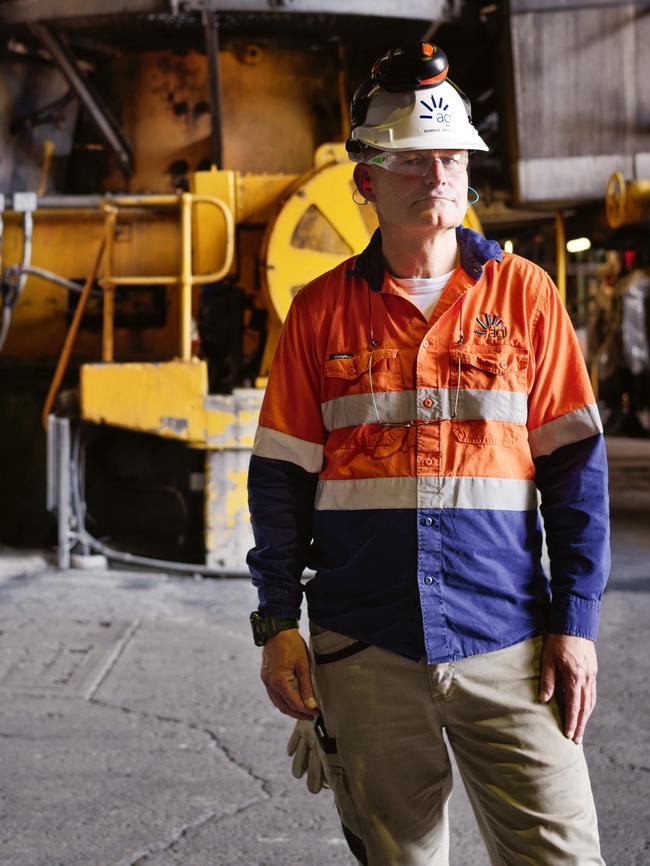If we want to power up, then offshore is where it’s at
It’s estimated Australia could generate up to 5000 gigawatts of electricity from offshore wind which is 75 times the installed generation capacity of the national electricity market.

Offshore wind could support the transformation of Australia’s energy system. The Global Wind Energy Council estimates that Australia has the potential to generate up to 5000 gigawatts of electricity from offshore wind – approximately 75 times the installed generation capacity of the national electricity market.
And the coast of Gippsland in Victoria has been identified as one of the best locations in the country for offshore wind projects due to its consistent offshore wind speeds and onshore energy infrastructure from decades of powering the nation. The federal government’s declaration that Gippsland will be Australia’s first offshore wind zone is welcome.
AGL, as part of a consortium of Australian and international companies, intends to develop offshore wind in the Gippsland zone, with a project size of 2.5GW.
Gippsland is the perfect hub from which to develop Australia’s first offshore wind industry, with its long history as one of Australia’s most important energy generation areas. It has the infrastructure, skilled workforce, and a culture of collaboration between industry, government and community that will be needed to create a new ecosystem of innovation and jobs around the offshore wind industry.
We estimate that our consortium’s proposed development could power up to 1.4 million average Victorian homes and supply about 17 per cent of Victoria’s electricity needs.

The development could generate more than $3.7bn in value for the economy and create over 4700 direct jobs in Australia over the 40-year project life, with approximately 2000 of those jobs in the Gippsland region.
Gippsland has an opportunity to position itself as the country’s new offshore wind hub. We plan to invest in regional supply chains, while leveraging the global reach of our consortium and knowledge of best industry practice. We will explore workforce training and reskilling initiatives.
Our consortium partners Mainstream Renewable Power, Reventus Power and DIRECT Infrastructure share our commitment to Australia’s energy transition and include pioneers in the global offshore wind industry. Most importantly, they bring a solid track record of embedding environmental and social considerations into project design and in developing and growing local supply chains for the long term. Environmental, community, and traditional owner considerations are built into how we design and develop new projects.
At AGL we are transitioning our business for a lower carbon future as we plan to add up to 12GW of new renewables and firming to our portfolio by 2035.
The transition of our thermal sites into integrated energy hubs is critical to this. In Gippsland the Loy Yang Power Station is due to close in 2035 and will be transformed into the Latrobe Valley Energy Hub over the next 12 years. It will bring together new renewable technologies and integrate associated industries that may include solar panel and battery recycling. The development of a new offshore wind industry would be an ideal complement to this work, with the build-out of new infrastructure and the development of new skills and local supply chains critical for both.
AGL’s approach to development is underpinned by a careful consideration of the environmental and stakeholder landscape that surrounds a new project. If awarded a licence, we will engage with business, community, and environmental groups across Gippsland to understand their feedback and incorporate it into how we progress our plans.
Our consortium’s aim is to closely engage with the region’s traditional owners and local communities to deliver an offshore wind project that addresses local needs, utilises local opportunities and supports regional development that will benefit both Gippsland and Victoria.
But establishing this new industry will not be easy. It will require a concerted effort from federal and state governments, the energy industry, and business and community groups as well as innovative solutions and bold moves. The federal government has fired the starter gun on offshore wind, but accelerating the process will be pivotal if a new industry is to develop and flourish. Timely support from the state government is also essential for approvals for port upgrades, new transmission lines and other key infrastructure.
Both levels of government must create a stable investment environment for offshore wind to encourage the levels of investment necessary to build a viable industry. There is global competition for capital, talent and resources, and Australia must compete.
But the opportunity is too great and the benefits too significant to not try. AGL and its consortium partners are ready to work with all levels of government and the local community to help establish this important new industry for Australia’s energy transition. By working together, we can create a new era of innovation, jobs, and prosperity for the Gippsland region.
Markus Brokhof is chief operating officer at AGL Energy.



To join the conversation, please log in. Don't have an account? Register
Join the conversation, you are commenting as Logout